GPT-5-Codex: OpenAI’s Agentic Coding Model for Autonomous Software Development
Discover GPT-5-Codex, OpenAI’s agentic coding model built for developers—optimized for refactoring, code reviews, testing, and full project builds.
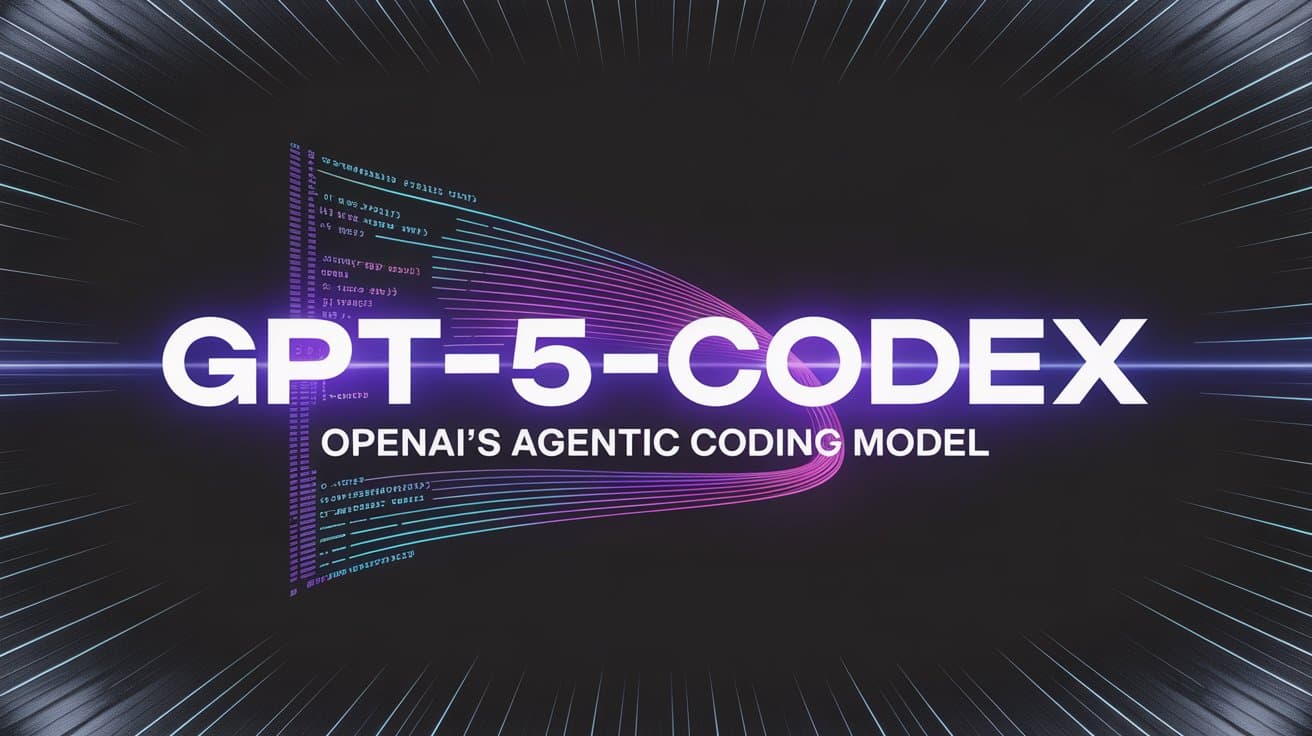
Meet GPT-5-Codex: OpenAI’s Agentic Coding Model for Developers
Published: September 22, 2025
The Evolution of AI Coding Assistants
OpenAI has released GPT-5-Codex, a specialized version of GPT-5 optimized for agentic coding. Unlike earlier iterations that focused mainly on autocomplete and small snippets, GPT-5-Codex is built for end-to-end software engineering workflows—from refactoring and debugging to code reviews and feature development.
This release marks the most significant step yet toward Codex acting as a coding partner, not just a prompt executor. The model is faster, more reliable, and capable of working autonomously across large projects.
What Sets GPT-5-Codex Apart
While GPT-5 is a general-purpose model, GPT-5-Codex was purpose-built for:
Codex CLI
Codex IDE extensions (VS Code, Cursor, etc.)
Codex Cloud environment
GitHub integration
Key Capabilities
Handles entire repositories with large context windows
Performs multi-step reasoning across files and dependencies
Specialized training on real-world engineering tasks
Optimized for refactoring, code reviews, and feature development
Agentic Behavior: Coding Beyond Autocomplete
The defining feature of GPT-5-Codex is its agentic workflow. The model balances:
Interactive pairing → Fast, short feedback loops during coding sessions
Autonomous execution → Long, independent work on refactors, test fixes, and feature builds
In internal testing, Codex ran independently for 7+ hours on large tasks—iterating, fixing test failures, and delivering working implementations.
Smarter Time Allocation
Small tasks → Snappier responses, fewer tokens used
Complex tasks → Deeper reasoning, more iterations, longer execution
This dynamic allocation means developers get fast help for simple edits and thorough work on complex projects.
Performance Benchmarks
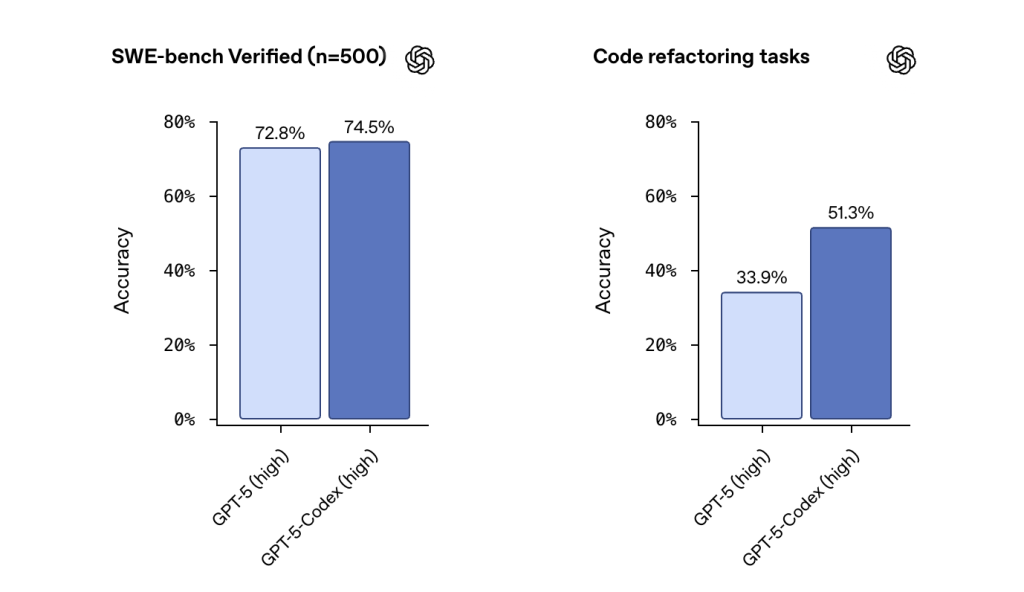
GPT-5-Codex shows measurable improvements over GPT-5:
SWE-bench Verified → 74.5% accuracy (vs 72.8% for GPT-5)
Refactoring tasks → 51.3% accuracy (vs 33.9% for GPT-5)
Token efficiency → Uses 93.7% fewer tokens on simple requests, but thinks more on complex ones
These results highlight the model’s efficiency + reasoning balance.
Advanced Code Review Capabilities
Code review is where GPT-5-Codex truly shines. Unlike static linters, Codex can:
Review entire repositories with dependency awareness
Match intent of PRs against actual diffs
Run tests and code to validate changes
Evaluation Results
Incorrect comments → 4.4% (vs 13.7% for GPT-5)
High-impact comments → 52.4% (vs 39.4% for GPT-5)
Comments per PR → 0.93 (fewer, but more useful)
OpenAI now uses Codex for most internal PR reviews, catching hundreds of issues daily before human review.
Tooling & Workflow Integration
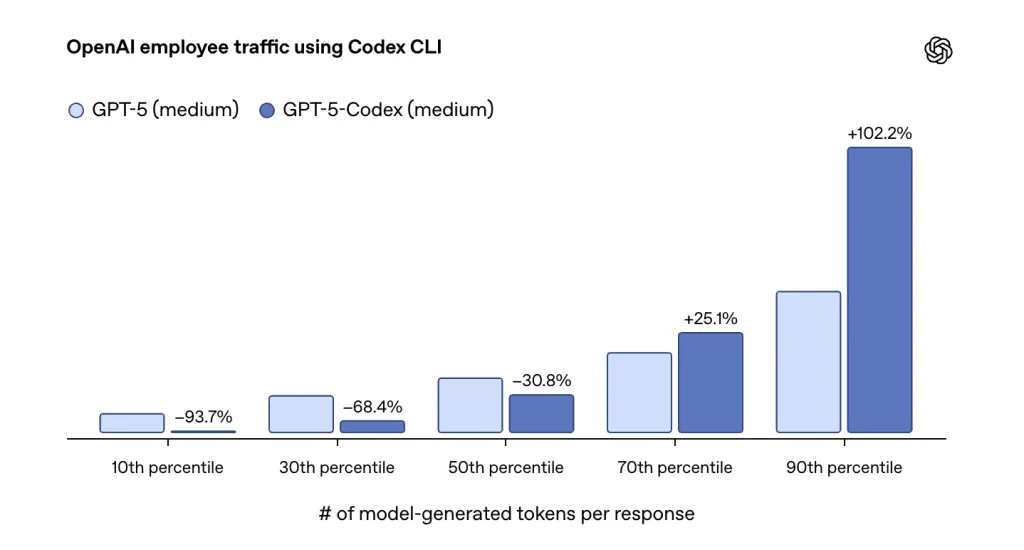
🔹 CLI
Attach images (wireframes, screenshots) for context
Built-in to-do list tracking
Supports web search + MCP for external tools
Clearer diffs and tool calls
🔹 IDE Extension
Works in VS Code, Cursor, and forks
Uses local context (open files, selections)
Smooth transition between cloud and local tasks
🔹 Cloud Environment
90% faster task startup times (thanks to container caching)
Auto-setup via detection of common scripts
Configurable internet access (pip installs, API calls)
🔹 Visual + Front-End Work
Accepts screenshots/UI designs as input
Can generate UI prototypes, test them in a browser, and attach screenshots to PRs
Real-World Applications
Large-Scale Refactoring
Threads variables through hundreds of files
Handles multi-language projects (Python, Go, OCaml)
Feature Development + Testing
Adds new features with comprehensive test coverage
Fixes broken tests and iterates until they pass
Continuous Code Reviews
Auto-reviews PRs on GitHub from draft → ready
Flags regressions, bugs, and security issues early
Front-End / UI Workflows
Prototypes apps directly from design specs or screenshots
Iterates visually in the cloud and shares progress
Hybrid Human-Agent Workflows
Developers provide high-level goals
Codex handles sub-tasks, dependencies, iteration
Safety, Security & Trust
Codex is designed with sandboxing and approvals to minimize risks:
Sandboxed execution → No default network access
Approval modes → Read-only, auto, or full-access
Command validation → Runs code/tests to verify outputs
Cloud restrictions → Network access limited to trusted domains
Safeguards align with OpenAI’s GPT-5 classification, keeping sensitive codebases secure.
Industry Impact & Adoption
Early adopters like Cisco Meraki, Duolingo, Ramp, Vanta, Virgin Atlantic, and Gap are already using GPT-5-Codex.
Developer Testimonial
“Codex handled a large refactor and generated tests while I focused on other priorities. The PR was production-ready and fully tested, saving us weeks of effort.”
— Tech Lead, Cisco Meraki
Key Benefits for Teams
Offload structural, repetitive work
Ensure consistent style and test coverage
Shift human focus to architecture & design
Availability & Pricing
Included in ChatGPT Plus, Pro, Business, Edu, and Enterprise plans
Pro & Enterprise tiers support full workweeks of usage
API availability planned soon
Default model for cloud tasks & code reviews
The Future of Collaborative Development
GPT-5-Codex is more than an assistant—it’s becoming a teammate. Developers who adapt to hybrid workflows will:
Ship faster
Build more reliable code
Scale projects without scaling headcount
The shift is clear: software development is moving from individual effort → human + AI collaboration. With GPT-5-Codex, AI is no longer just filling in code—it’s actively coding, reviewing, and collaborating alongside us.
===================================================================
Master Generative AI in just 8 weeks with the GenAI Launchpad by Build Fast with AI.
Gain hands-on, project-based learning with 100+ tutorials, 30+ ready-to-use templates, and weekly live mentorship by Satvik Paramkusham (IIT Delhi alum).
No coding required—start building real-world AI solutions today.
👉 Enroll now: www.buildfastwithai.com/genai-course
⚡ Limited seats available!
===================================================================
Resources & Community
Join our vibrant community of 12,000+ AI enthusiasts and level up your AI skills—whether you're just starting or already building sophisticated systems. Explore hands-on learning with practical tutorials, open-source experiments, and real-world AI tools to understand, create, and deploy AI agents with confidence.
Website: www.buildfastwithai.com
GitHub (Gen-AI-Experiments): git.new/genai-experiments
LinkedIn: linkedin.com/company/build-fast-with-ai
Instagram: instagram.com/buildfastwithai
Twitter (X): x.com/satvikps
Telegram: t.me/BuildFastWithAI
AI That Keeps You Ahead
Get the latest AI insights, tools, and frameworks delivered to your inbox. Join builders who stay ahead of the curve.
You Might Also Like
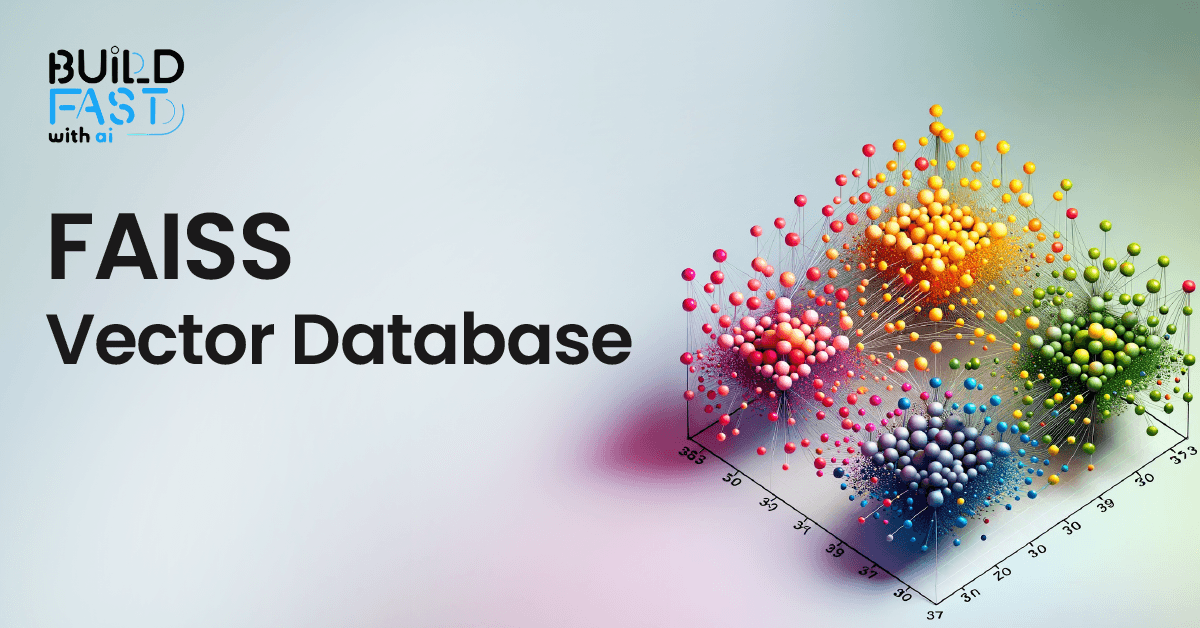
How FAISS is Revolutionizing Vector Search: Everything You Need to Know
Discover FAISS, the ultimate library for fast similarity search and clustering of dense vectors! This in-depth guide covers setup, vector stores, document management, similarity search, and real-world applications. Master FAISS to build scalable, AI-powered search systems efficiently! 🚀
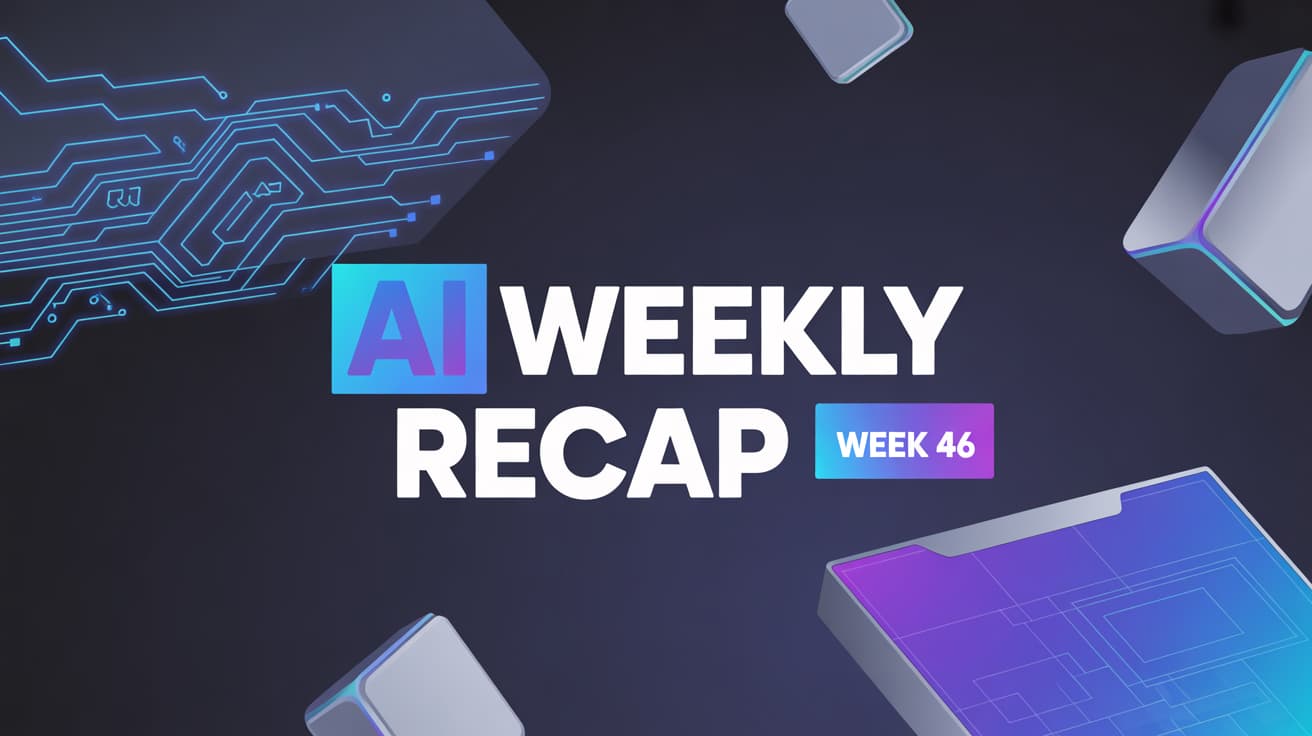
7 AI Tools That Changed Development (November 2025)
Week 46's top AI releases: GPT-5.1 runs 2-3x faster, Marble creates 3D worlds, Scribe v2 hits 150ms transcription. Discover all 7 breakthrough tools.
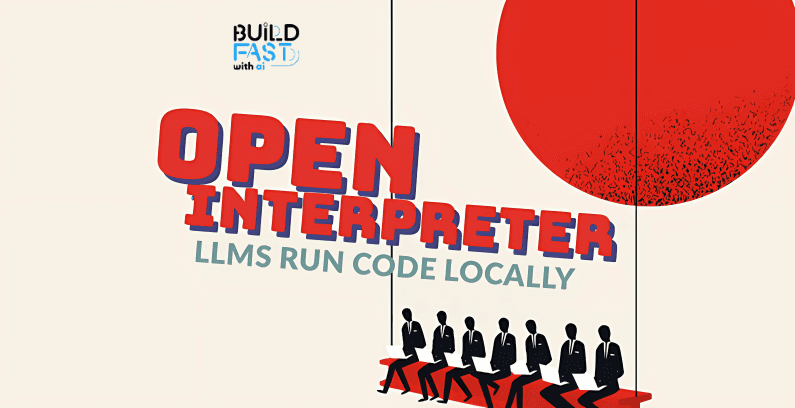
Open Interpreter: Local Code Execution with LLMs
Discover how to harness the power of Large Language Models (LLMs) for local code execution! Learn to generate, execute, and debug Python code effortlessly, streamline workflows, and enhance productivity. Dive into practical examples, real-world applications, and expert tips in this guide!

